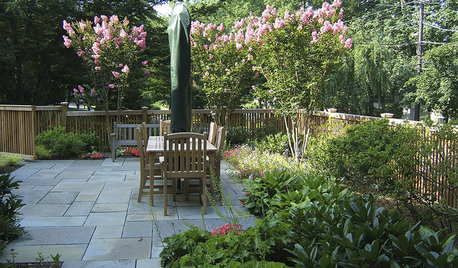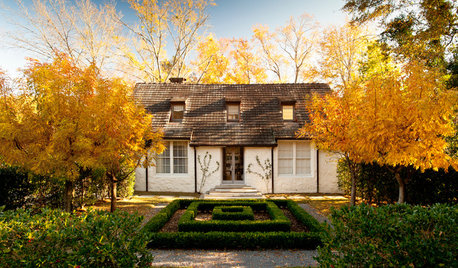crepe myrtle leaf drop
Related Stories

GARDENING GUIDESGreat Design Plant: Crape Myrtle
With long-lasting blooms and gorgeous exfoliating bark, this ornamental tree brings bright color and a unique form to the landscape
Full Story
GARDENING GUIDES5 Best-Behaved Trees to Grace a Patio
Big enough for shade but small enough for easy care, these amiable trees mind their manners in a modest outdoor space
Full Story
GARDENING GUIDESHow I Learned to Be an Imperfect Gardener
Letting go can lead to a deeper level of gardening and a richer relationship with the landscape. Here's how one nature lover did it
Full Story
GROUND COVERSGround Force: 10 Top Ground Covers for Your Garden
Protect your soil from weeds and drought this summer with a living mulch of ground covers
Full Story
FALL GARDENING11 Trees for Brilliant Fall Color
Give your landscape the quintessential look of autumn with the red, orange and yellow leaves of these standouts
Full Story
LANDSCAPE DESIGNThe 7 Best Plant Types for Creating Privacy and How to Use Them
Follow these tips for using different kinds of plants as living privacy screens
Full Story
LANDSCAPE DESIGN7 Great Trees for Summer Shade and Fall Color
These landscape-pro faves straddle the seasons beautifully. Could one enhance your own yard?
Full Story
GARDENING GUIDES6 Plants for Colorful Fall Foliage in the Water-Wise Western Garden
Try these colorful, drought-tolerant additions to your garden for a fall season filled with color
Full Story
GARDENING GUIDESOh, Deer! 10 Native Flowers That Stand Up to the Herds
Keeping a garden amid hungry deer can be hard, but these plants should fare well
Full Story
FALL GARDENINGHouzz Call: Show Us Your Fall Color!
Post pictures of your fall landscape — plants, leaves, wildlife — in the Comments section. Your photo could appear in an upcoming article
Full StorySponsored
Columbus Area's Luxury Design Build Firm | 17x Best of Houzz Winner!
More Discussions







PKponder TX Z7B
roselee z8b S.W. Texas
Related Professionals
Citrus Heights Landscape Architects & Landscape Designers · Marina Landscape Architects & Landscape Designers · Caldwell Landscape Contractors · Dickinson Landscape Contractors · Elmhurst Landscape Contractors · Mason Landscape Contractors · Morrisville Landscape Contractors · North Richland Hills Landscape Contractors · Pleasant Hill Landscape Contractors · Rockland Landscape Contractors · Boise Window Contractors · Cincinnati Window Contractors · East Los Angeles Window Contractors · Palos Heights Window Contractors · Wixom Window Contractorsdaninthedirt (USDA 9a, HZ9, CentTX, Sunset z30, Cfa)Original Author
daninthedirt (USDA 9a, HZ9, CentTX, Sunset z30, Cfa)Original Author
roselee z8b S.W. Texas
daninthedirt (USDA 9a, HZ9, CentTX, Sunset z30, Cfa)Original Author
roselee z8b S.W. Texas
daninthedirt (USDA 9a, HZ9, CentTX, Sunset z30, Cfa)Original Author